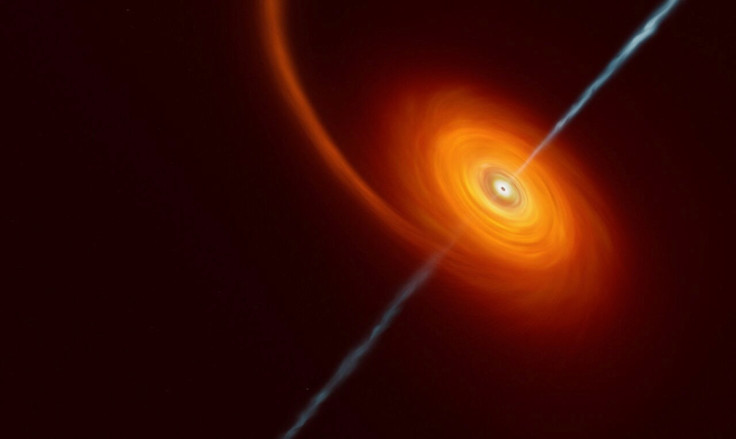Distant Black Hole Is Caught In The Act Of Annihilating A Star

Astronomers have detected an act of extreme violence more than halfway across the known universe as a black hole shreds a star that wandered too close to this celestial savage. But this was no ordinary instance of a ravenous black hole.
It was one of only four examples - and the first since 2011 - of a black hole observed in the act of tearing apart a passing star in what is called a tidal disruption event and then launching luminous jets of high-energy particles in opposite directions into space, researchers said. And it was both the furthest and brightest such event on record.
Astronomers described the event in studies published on Wednesday in the journals Nature and Nature Astronomy.
The culprit appears to be a supermassive black hole believed to be hundreds of millions of times the mass of our sun located roughly 8.5 billion light years away from Earth. A light year is the distance light travels in a year, 5.9 trillion miles (9.5 trillion km).
"We think that the star was similar to our sun, perhaps more massive but of a common kind," said astronomer Igor Andreoni of the University of Maryland and NASA's Goddard Space Flight Center, lead author of one of the studies.
The event was detected in February through the Zwicky Transient Facility astronomical survey using a camera attached to a telescope at the Palomar Observatory in California. The distance was calculated using the European Southern Observatory's Very Large Telescope in Chile.
"When a star dangerously approaches a black hole - no worries, this will not happen to the sun - it is violently ripped apart by the black hole's gravitational tidal forces -similar to how the moon pulls tides on Earth but with greater strength," said University of Minnesota astronomer and study co-author Michael Coughlin. (See animation of tidal disruption event)
"Then, pieces of the star are captured into a swiftly spinning disk orbiting the black hole. Finally, the black hole consumes what remains of the doomed star in the disk. In some very rare cases, which we estimated to be 100 times rarer, powerful jets of material are launched in opposite directions when the tidal disruption event occurs," Coughlin added.
Andreoni and Coughlin said the black hole was likely spinning rapidly, which might help explain how the two powerful jets were launched into space at almost the speed of light.
Massachusetts Institute of Technology astronomer Dheeraj Pasham, lead author of the other study, said the researchers were able to observe the event very early on - within a week of the black hole starting to consume the doomed star.
While researchers detect tidal disruption events about twice per month, ones that produce jets are extremely rare. One of the jets emanating from this black hole seems to be pointing toward Earth, making it appear brighter than if it were heading in another direction - an effect called "Doppler boosting" that is similar to the enhanced sound of a passing police siren.
The supermassive black hole is believed to reside at the center of a galaxy - much as the Milky Way and most galaxies have one of these at their core. But the tidal disruption event was so bright that it obscured the light of the galaxy's stars.
"At its peak, the source appeared brighter than 1,000 trillion suns," Pasham said.
© Copyright Thomson Reuters 2024. All rights reserved.





















